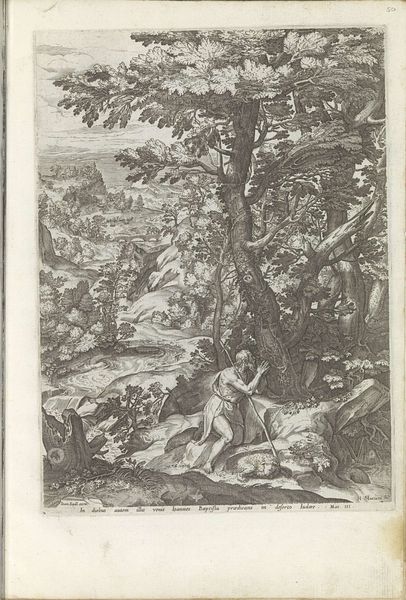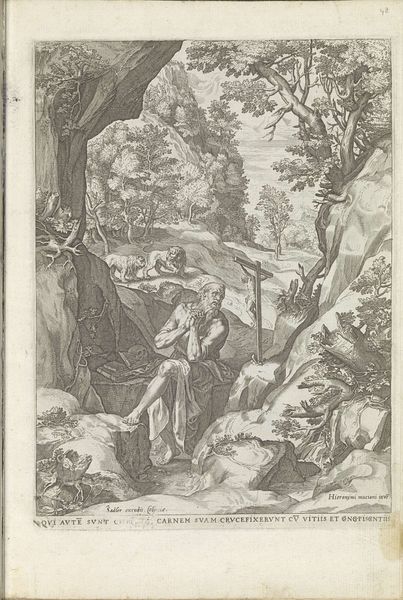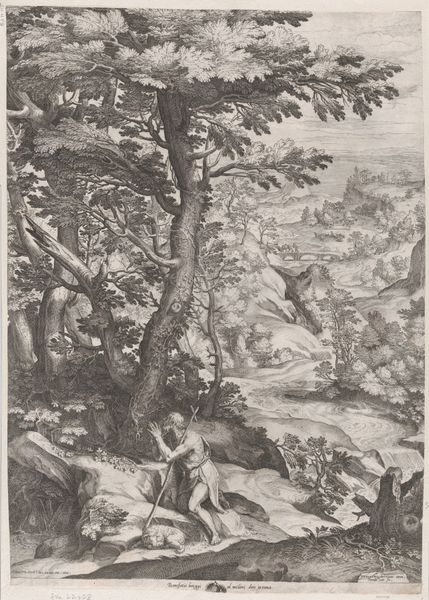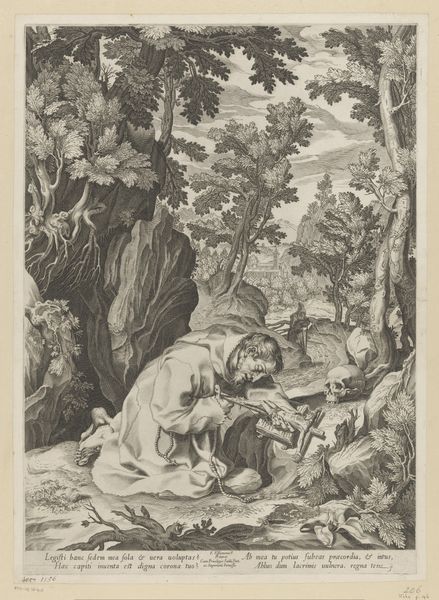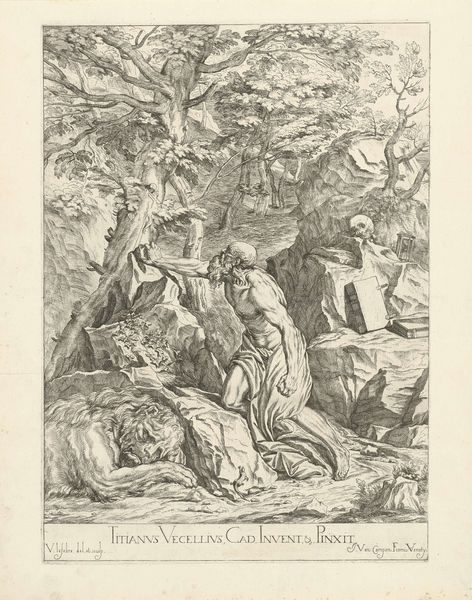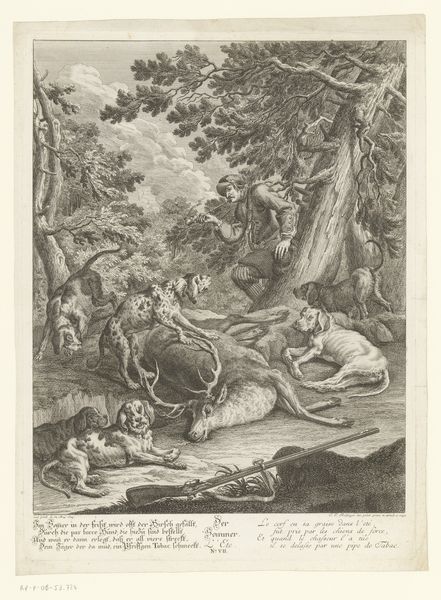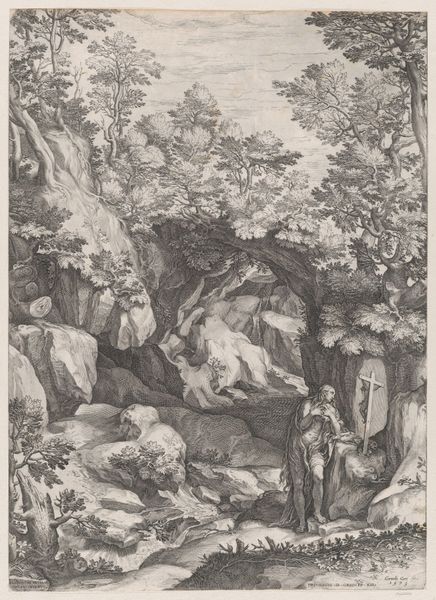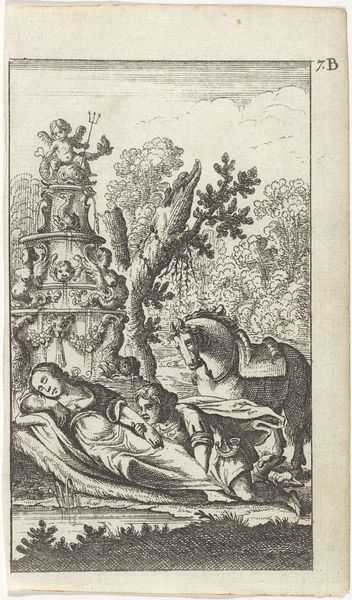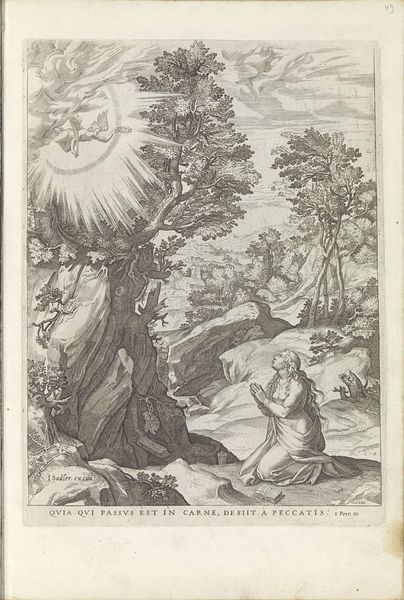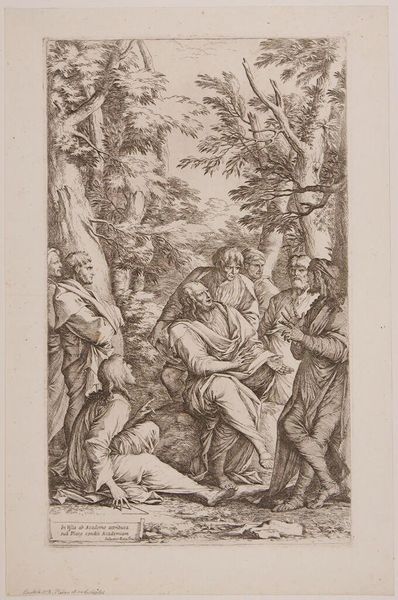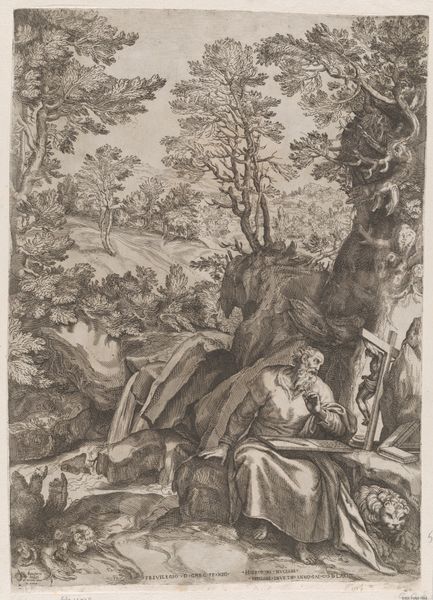
print, engraving
# print
#
landscape
#
mannerism
#
figuration
#
engraving
Dimensions: height 263 mm, width 185 mm
Copyright: Rijks Museum: Open Domain
Curator: Immediately, the sheer detail in this engraving grabs me. There's a density to the scene, like peering into a thick forest. Editor: This is "Landscape with Mary Magdalene," likely created between 1573 and 1600 by an anonymous artist. It's currently held in the Rijksmuseum collection. What strikes me is the very intentional isolation of Magdalene, almost like she's swallowed up by the wild. Curator: Yes! The way she is placed deep within this rocky, overgrown landscape absolutely communicates a feeling of introspective withdrawal. The grotto acts as a sort of symbolic cave, doesn't it? A space for hermitage, very powerful in the Counter-Reformation period. Editor: Absolutely, the grotto or cave is classic imagery in portrayals of Magdalene and other desert mothers, harkening back to their symbolic death and rebirth away from society. The Magdalene is often read as penitent or remorseful for her past, though modern scholarship increasingly views her time in isolation as an intentional choice to live a life with God. She’s often accompanied by skull iconography too as a ‘memento mori’, though that is notably absent here. The artist portrays her peacefully in the midst of creation. Curator: What you point out is that she does look remarkably serene for someone supposedly repenting! And what’s fascinating too, is how her own form seems to almost echo the shapes of the rocks around her, blurring the lines between the figure and the environment. This print aestheticized her story but also perhaps depoliticizes it. Editor: That visual echo absolutely speaks to the Mannerist style— a harmony, or maybe intentional ambiguity, between the figure and the dramatic landscape. I also think this almost romantic representation of penitence suited the desires of wealthy collectors during that era, but who am I to assume intent centuries later? Curator: It certainly raises interesting questions about the purpose and impact of religious imagery. What do we choose to show and what does that show about the culture and time that chooses it? Thank you for joining me in taking a look. Editor: Likewise. Hopefully, it inspires us all to consider the multifaceted nature of visual representation in relation to religious subjects in the centuries to come.
Comments
No comments
Be the first to comment and join the conversation on the ultimate creative platform.
